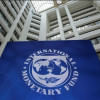3 binding conditions for IMF loan

The International Monetary Fund is set to tag three binding conditions and a host of structural reforms for the prospective $4.5 billion loan to Bangladesh, as the Washington-based multilateral lender looks to bring in lasting reforms in the country.
The mandatory conditions -- which are specific, measurable targets called quantitative performance criteria (QPC) -- would be a minimum level of net international reserves and domestic revenue collection and a ceiling on the government's budget deficit, The Daily Star has learnt from people involved in the negotiations with the IMF staff mission to thrash out the terms for the loan.
The government must meet the stipulated targets for the respective QPCs before the IMF releases the instalments, which would be disbursed over a 42-month period.
The targets for the three QPCs, which were set by the IMF with the view to building on the country's reserve buffer and creating fiscal space, would progressively increase with each instalment.
If the IMF board approves Bangladesh's loan application in its meeting in the third week of January next year, the first instalment of $447.8 million would be released the following month without the need for any prior action.
The QPCs will kick in from the second instalment onwards.
When authorising the first instalment, the IMF staff mission will set the targets for the QPCs for the second instalment of $659.18 million, scheduled for six months later.
If the government fails to meet the QPC targets, the IMF would not approve the second instalment. And if the government meets the targets, the funds would be released and the IMF staff mission would then proceed to set the targets for the next instalment, which would also be $659.18 million.
The process would repeat for the successive four instalments of $659.18 million each scheduled every six months.
Closer to home, Pakistan's $6 billion loan programme was stalled midway after the country failed to meet two of its six QPCs.
Zahid Hussain, a former lead economist of the World Bank's Dhaka office, is unsure whether the three QPCs set would be practicable and effective.
"In case of reserves, it is possible to set an achievable QPC, and based on that, reforms in exchange rate management can be hoped."
For revenue, unless the floor is realistic and based on historical performance, it could derail the programme for Bangladesh.
"For budget deficit, since it is a ratio, it will depend on a random factor. If the GDP deficit does not increase, then the question arises of where you would do the correction: numerator or denominator. This is not a good QPC and will create confusion."
Identifying the corrective actions for failure to meet the budget deficit QPC would be tricky then, Hussain added.
Other than the three QPCs, the IMF loan programme, which would be the 13th for Bangladesh, would come with a host of indicative targets and 15-16 structural benchmarks. Both the structural benchmarks and indicative targets would have a timeline.
Indicative targets are similar to QPCs in that those are quantitative indicators to assess progress in meeting a programme's objectives. Sometimes ITs are set instead of QPCs because of uncertainty about economic trends. As uncertainty is reduced, these targets may become QPCs, with appropriate modifications.
Structural benchmarks are reform measures that often are non-quantifiable but are critical for achieving programme goals and are intended as markers to assess programme implementation.
Missed structural benchmarks and indicative targets would not lead to a pause in instalment disbursements. But the country would need to send in a detailed report to the IMF board on why the conditions were not met.
The IMF board would assess it in the context of overall programme performance and then give a fresh timeline to meet those conditions.
The structural benchmarks for Bangladesh would comprise measures to improve governance in the financial sector; amendments to the Bank Company Act; leaving out government staff's pension and interest on savings certificates from social safety net programmes; implementing the VAT law; automated fuel pricing; setting up an asset management company to dispose of soured loans.
Indicative targets may include bringing down the banking sector's default loans to within 10 percent and raising the capital adequacy ratio to the BASEL 3 requirement of 12.5 percent and a minimum level for social spending.
In the coming weeks, the IMF staff mission would be preparing a country report including the terms agreed upon by the government.
The report would be sent to the government by the middle of December. Finance Minister AHM Mustafa Kamal and Bangladesh Bank Governor Abdur Rouf Talukder would then sign on the dotted line and send the official proposal to the IMF management, which would be forwarded to the board.
Then in the second week of January, a deputy managing director of the IMF would visit Bangladesh on a fact-finding mission.
The deputy managing director would be placing the proposal to the IMF board and answering all queries the board members might have on the loan proposal when authorising the programme.

 For all latest news, follow The Daily Star's Google News channel.
For all latest news, follow The Daily Star's Google News channel. 








Comments